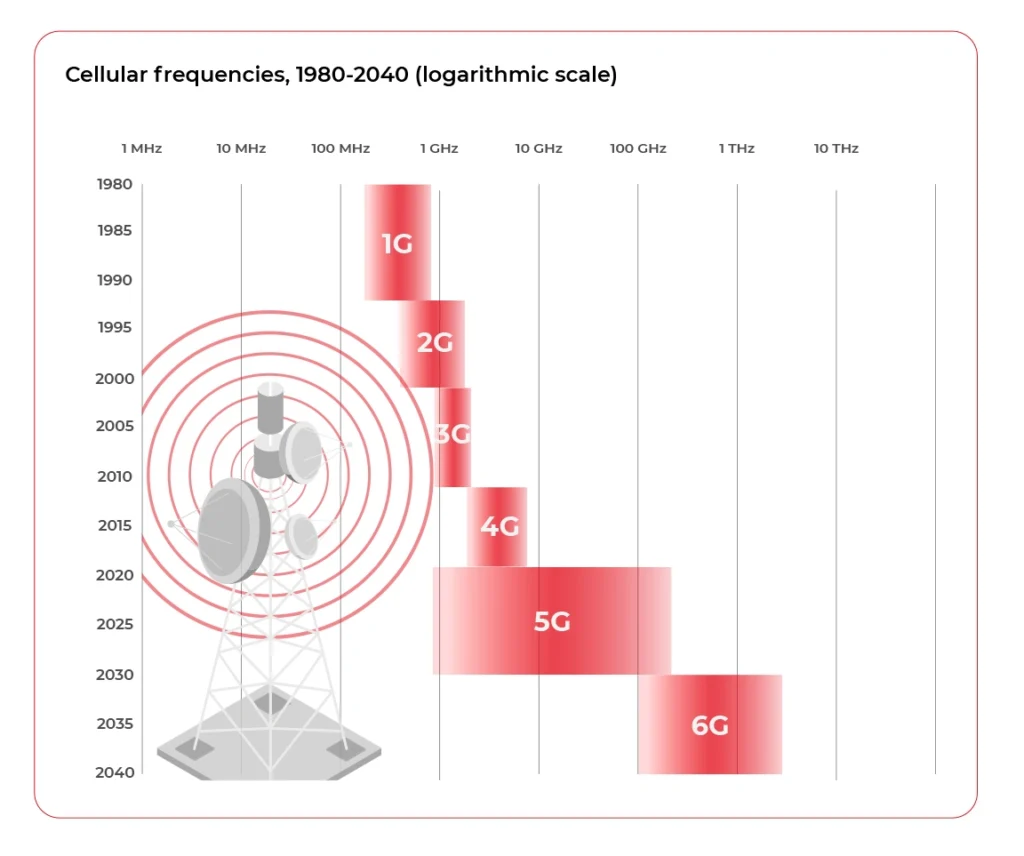The title of the article is quite deceiving – both mentioned technologies are currently just distant concepts based on widely divergent connectivity mediums. It’s still a distant future, but let’s think for a while about where we are now, what awaits us in the very near future and where we are heading in the long term.
Autonomous driving and the whole Connected Car concept benefits greatly from internet connectivity. Traffic information, being able to request information about nearby cars, navigation, infrastructures like traffic lights, parking, or charging stations – all of that affects the decision about the actual path to be taken by the vehicle or driver.
Some of the systems are rather insensitive to the network bandwidth, for example, the layout of the roads does not require updates every second. On the other hand information about red light or vehicles losing traction nearby are critical and lowering latency directly affects the safety.
What technologies provide connectivity for autonomous driving?
These days cars mainly use the common mobile technology for connectivity: GPRS/EDGE, 3G/HSDPA, LTE, and 4G switching dynamically depending on network coverage. As the availability of 5G increases, the obvious next step is implementing it in the vehicle modems.
Can Connected Cars rely on 5G?
Obviously, 5G will never be available everywhere. The technology itself is a limitation here – it is millimeter-wave connectivity resulting in 2% of range compared to 4G (300-600m compared to 10-15km). Additionally, the latest Ericsson report predicts that by the end of 2026, 5G coverage is expected to reach 60 percent of the global population, while this still means mainly densely populated areas like cities and suburbs.

5G solves the latency and bandwidth problem but does not give full coverage, especially for rural areas and highways. Is there nothing more we can use to improve the situation? Not at all, multiple alternatives are being developed right now in parallel.
What are the alternatives to 5G?
There is IEE80211.p (WAVE – Wireless Access for the Vehicular Environment) based on the Wi-Fi WLAN standard focusing on improving the stability of the connection between high-speed vehicles. This is short-range, Vehicle2Vehicle and Vehicle2Infrarstructure communication.
While the 5G is not yet fully there, the 6G is starting to form. The successor of the 5th generation of the wireless cellular network is planned to increase the bandwidth, greatly allowing for extremely data consuming, real-time services to be built – like dynamic Virtual Reality streaming. The groups, like the Next G Alliance, are working on defining technical aspects and testing multiple possibilities, like THz wave frequencies as a physical medium for communication.
The other promising development is the LEO (Low Earth Orbit) satellite network, with a Starlink created by Elon Musk being the most popular currently available. This is no match in terms of latency to both 5G and 6G, but the unprecedented coverage and worldwide availability make it a great solution for situations, where the bandwidth is critical, while moderate latency is still sufficient.
The most futuristic medium, the quantum entanglement from the title of this article, seemed like the Holy Grail of communication – faster than light, meaning no latency at all. When the scientists announced that quantum entanglement works and was observed by comparing distant, entangled particles, the world held its breath. But in the end, there is currently no way to transmit anything this way – quantum entanglement breaks if one of the particles in the pair is forced to a particular quantum state. It’s disappointing but shows us that there may be a totally new way for communication still to be discovered.
Sum up: what connection type will be fueling Connected and Autonomous Cars
So what is the future of communication for Connected Cars and Autonomous Driving? 5G, 6G, satellite or wifi? The answer is all of them. As cars right now can dynamically switch between different kinds of mobile networks, in the future, they should also be able to pick the lowest latency connection available from a mobile network, satellite, wifi or whatever will be the future, or even use multiple simultaneously depending on the system requirements. Because there is no one best solution for all geographical regions, in-car systems, and conflicting requirements. Hybrid connectivity is the future of automotive connectivity.







More Stories
New low prices on phones, tablets, and more
Watch Adam Savage Go “Hands On” With the Original Enterprise From ‘Star Trek’ – Review Geek
Google Messages reactions about to expand in choices